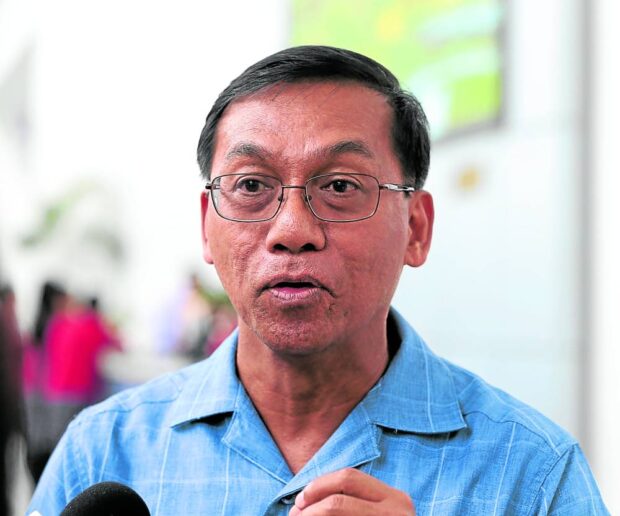
Science and Technology Secretary Renato Solidum Jr. (INQUIRER FILE PHOTO)
MANILA, Philippines — With the country having very few researchers unlike its neighbors in the region, the Department of Science and Technology (DOST) plans to encourage more students to pursue the field of research, starting with a festival aimed at enticing the youth to the various disciplines in science.
Science and Technology Secretary Renato Solidum Jr. said the Philippines has only 174 full-time researchers per 1 million people.
“We are already behind countries within Southeast Asia alone, where Singapore has 6,730 researchers per million population while Malaysia has more than 2,200 researchers per million population,” he said at a press briefing on Thursday.
With the current number of Filipino researchers less than half of DOST’s “reference point” of 380, Solidum said the agency hopes to surpass that figure.
The DOST chief said institutions under the Commission on Higher Education could consider reorienting education on research toward the commercialization of that expertise.
“The more you commercialize, the more income [for] the university, and the more jobs and opportunities for researchers to spin off companies. Then more researchers will go there,” Solidum said.
Science festival
The DOST said it targets young and budding scientists and inventors to pursue careers in various fields of science, as it prepares for the first-ever National Youth Science, Technology, and Innovation Festival from Oct. 25 to Oct. 28 at the Philippine International Convention Center.
The festival, which encourages the participation of high school and college students and out-of-school youths, will feature science and technology competitions, exhibits, forums and seminars, technology demonstrations, and workshops, among others.
Some discussions in this event will tackle artificial intelligence and its application in vaccine production and its impact on science communication, academic research, and scientific publication, among other endeavors.
A “nuclear career talk” will also be held, where student leaders could learn more about nuclear science through such activities as radioactivity monitoring and other demonstrations.
Interested participants may register for free at nystif.dost.gov.ph.
READ: Tolentino to DOST: Why science fairs, contests for students not promoted well?
READ: PH’s Grade 4 students lowest in math, science around the world — int’l study
READ: Grades 1-12 private school learners flunk math, science assessment
Survey, findings
The DOST chief said he was optimistic that the festival would inspire the youth to pursue science and technology-related courses, despite the not-too-encouraging data so far.
Solidum himself cited a survey by the Department of Education which showed that only 23 percent of the 2.8 million enrollees in senior high school last year were in the science, technology, engineering, and mathematics (STEM) subjects.
He also noted the 2018 findings of the global policy forum Organization for Economic Cooperation and Development (OECD), which showed that the average score of 15-year-old Filipino students in scientific and mathematical literacy was 357 and 353, respectively — both results lower than the OECD average of 489 points.
“What is alarming is the Philippine-specific Pisa (Programme for International Student Assessment) 2018 report which said that only 31 percent of students in the Philippines hold a growth mindset—an important factor in developing science-inspired thinking among our students,” Solidum said.
Language, activities
Josette Biyo, director of the DOST-Science Education Institute (SEI), said one of the factors that affect the mathematical literacy of students is what she called the language barrier.
“The problem in mathematics is not mathematics per se but the inability of children to understand the language and process on how to use it,” she said.
“We are training the teachers how to use the language, whether it’s their indigenous language or English, to put [the lessons] into context [so] the kids could understand what is being taught,” Biyo added.
In a study that looked into the perception of Grades 7 to 10 students toward STEM, the learners said their teachers used a mix of Filipino and English in teaching those subjects. In some cases outside Metro Manila, the local language was used as a medium of instruction.
“Participants said that they prefer the mix of Filipino and English since they are able to understand the concepts better, especially among students who do not possess a mastery of either language,” said the research conducted by the DOST-SEI and the University of the Philippines-College of Mass Communication Foundation.
Biyo said there is also a problem in basic education, which does not encourage children to pursue STEM through “hands-on activities.”
Based on the study, students’ interest in the sciences depended on their participation in practical activities like experiments, exposure trips, quiz bees, research assemblies, slogan-making contests, and science investigatory projects.
Biyo said the DOST-SEI is developing a program that encourages teachers to “use what is existing in the environment and in the locality,” so students can do more hands-on activities.